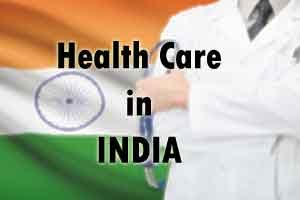- Home
- Medical news & Guidelines
- Anesthesiology
- Cardiology and CTVS
- Critical Care
- Dentistry
- Dermatology
- Diabetes and Endocrinology
- ENT
- Gastroenterology
- Medicine
- Nephrology
- Neurology
- Obstretics-Gynaecology
- Oncology
- Ophthalmology
- Orthopaedics
- Pediatrics-Neonatology
- Psychiatry
- Pulmonology
- Radiology
- Surgery
- Urology
- Laboratory Medicine
- Diet
- Nursing
- Paramedical
- Physiotherapy
- Health news
- Fact Check
- Bone Health Fact Check
- Brain Health Fact Check
- Cancer Related Fact Check
- Child Care Fact Check
- Dental and oral health fact check
- Diabetes and metabolic health fact check
- Diet and Nutrition Fact Check
- Eye and ENT Care Fact Check
- Fitness fact check
- Gut health fact check
- Heart health fact check
- Kidney health fact check
- Medical education fact check
- Men's health fact check
- Respiratory fact check
- Skin and hair care fact check
- Vaccine and Immunization fact check
- Women's health fact check
- AYUSH
- State News
- Andaman and Nicobar Islands
- Andhra Pradesh
- Arunachal Pradesh
- Assam
- Bihar
- Chandigarh
- Chattisgarh
- Dadra and Nagar Haveli
- Daman and Diu
- Delhi
- Goa
- Gujarat
- Haryana
- Himachal Pradesh
- Jammu & Kashmir
- Jharkhand
- Karnataka
- Kerala
- Ladakh
- Lakshadweep
- Madhya Pradesh
- Maharashtra
- Manipur
- Meghalaya
- Mizoram
- Nagaland
- Odisha
- Puducherry
- Punjab
- Rajasthan
- Sikkim
- Tamil Nadu
- Telangana
- Tripura
- Uttar Pradesh
- Uttrakhand
- West Bengal
- Medical Education
- Industry
80 Percent of Indian doctors located in urban areas - KPMG OPPI Report

Nearly 75 per cent of dispensaries, 60 per cent of hospitals and 80 per cent of doctors are located in urban areas, serving only 28 per cent of the Indian populace, says a new report released by KPMG and the Organisation of Pharmaceutical Producers of India (OPPI).
The survey was released at the Fifth Healthcare Access Summit - act on NCDs organised by OPPI and supported by Ministry of Health and Family Welfare and the Department of Pharmaceuticals, Ministry of Chemicals and Fertilisers here on Friday.
Speaking at the event Jitendra Singh, Minister of State for Prime Minister's Office and Development of North Eastern Region, pointed out at the mismatch in rural and urban areas in the healthcare sector.
"India has got world class private healthcare sector and only one-third of the population can access this. There is a huge mismatch which needs to covered. Healthcare sector needs to establish its base in sub-urban and rural places as well," Singh said.
The report also pointed out that non-communicable diseases (NCDs) account for nearly 60 per cent of deaths in India annually and the country is estimated to lose $4.58 trillion by 2030 due to them.
"Awareness about NCDs needs to be created among people living in rural areas and not just cities to reduce the growing percentage. Changes in lifestyle is a major reason, physical activities have gone down and therefore healthy routine should be adopted," Singh emphasised.
NCDs like diabetes, cardio-vascular diseases, chronic lung diseases and cancer are not just restricted to urban but gradually spreading to rural, north and northeastern parts of the country.
"NCD like diabetes is a genetic disease which is usually transmitted to off springs from parents and therefore putting a stop from generation to generation transfer of the disease is important. Regular checkups is must for off springs with diabetic parents and vaccinations at early age is also necessary," said Arun Panda, Additional Secretary, Ministry of Health and Family Welfare at the event.
Panda also mentioned that the government is taking steps by spreading awareness through radio jingles, television and print advertisements.
"In line with WHO's Global action plan for the prevention and control of ncds 2013-2020, India is one of the first countries to develop specific national targets and indicators aimed at reducing the number of global premature deaths from ncds by 25 per cent by 2025," Panda stated.
The report further cited some poor healthcare indices for India like the life expectancy rate (68 years in 2015) which is amongst the lowest in BRIC nations.
In rural India, only 37 per cent of people have access to In-Patient Department (IPD) facilities within a 5 km distance and only 68 per cent have access to an Out-Patient Department (OPD). India also has the lowest number of physicians per 10,000 population among BRIC countries, the report revealed.


